-
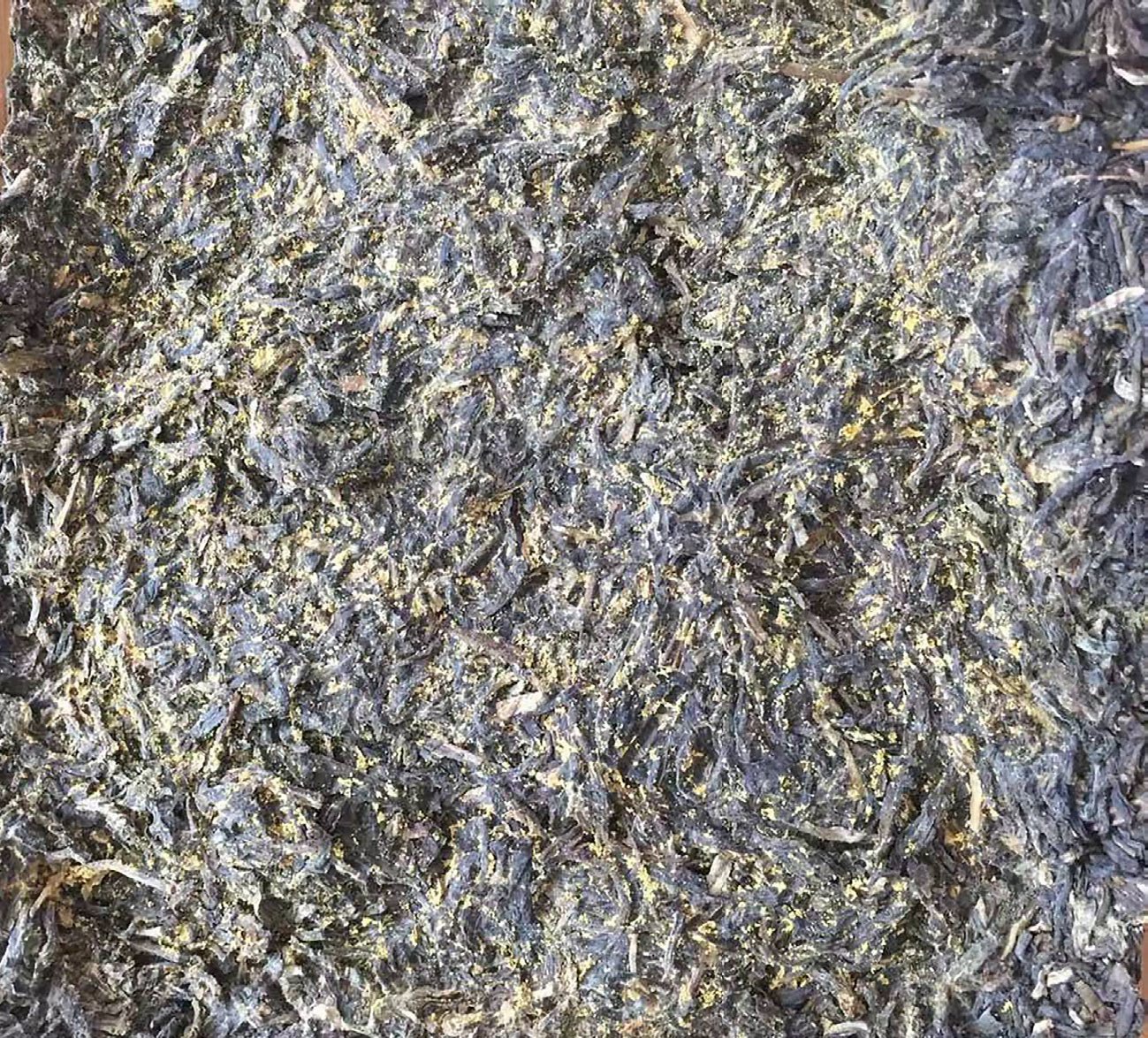
Figure 1. Fu brick tea.
-
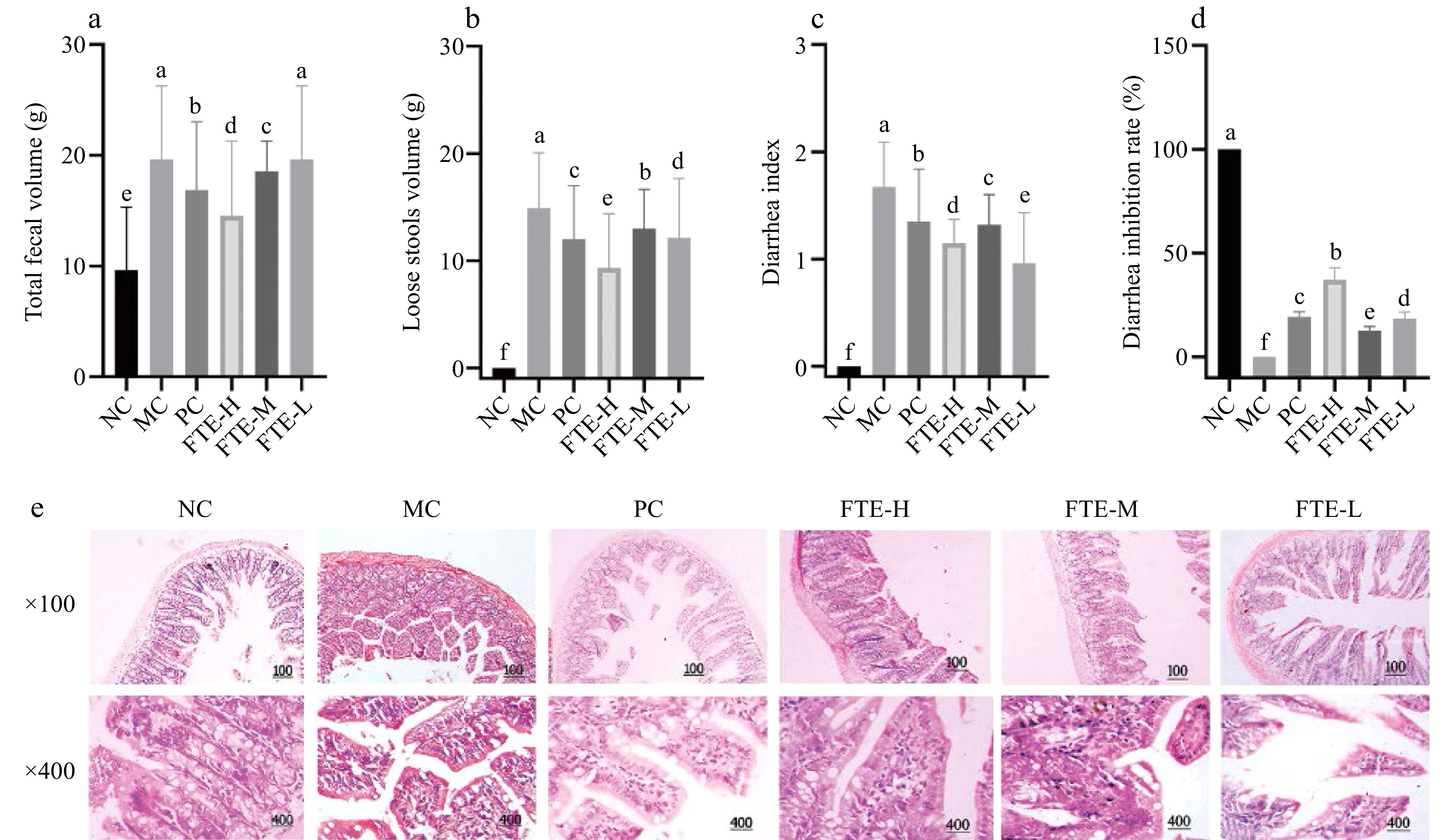
Figure 2. Diarrhea parameters: (a) total fecal volume, (b) loose stools volume, (c) diarrhea index, (d) diarrhea inhibition rate, and (e) pathological photomicrographs of ileum. NC: normal control group; MC: model control group; PC: positive control group; FTE-H: high dose FTE group; FTE-M: middle dose FTE group; FTE-L: low dose FTE group. Lowercase letters represent significant differences in different types of samples by one-way ANOVA followed by Duncan post hoc test (P < 0.05).
-
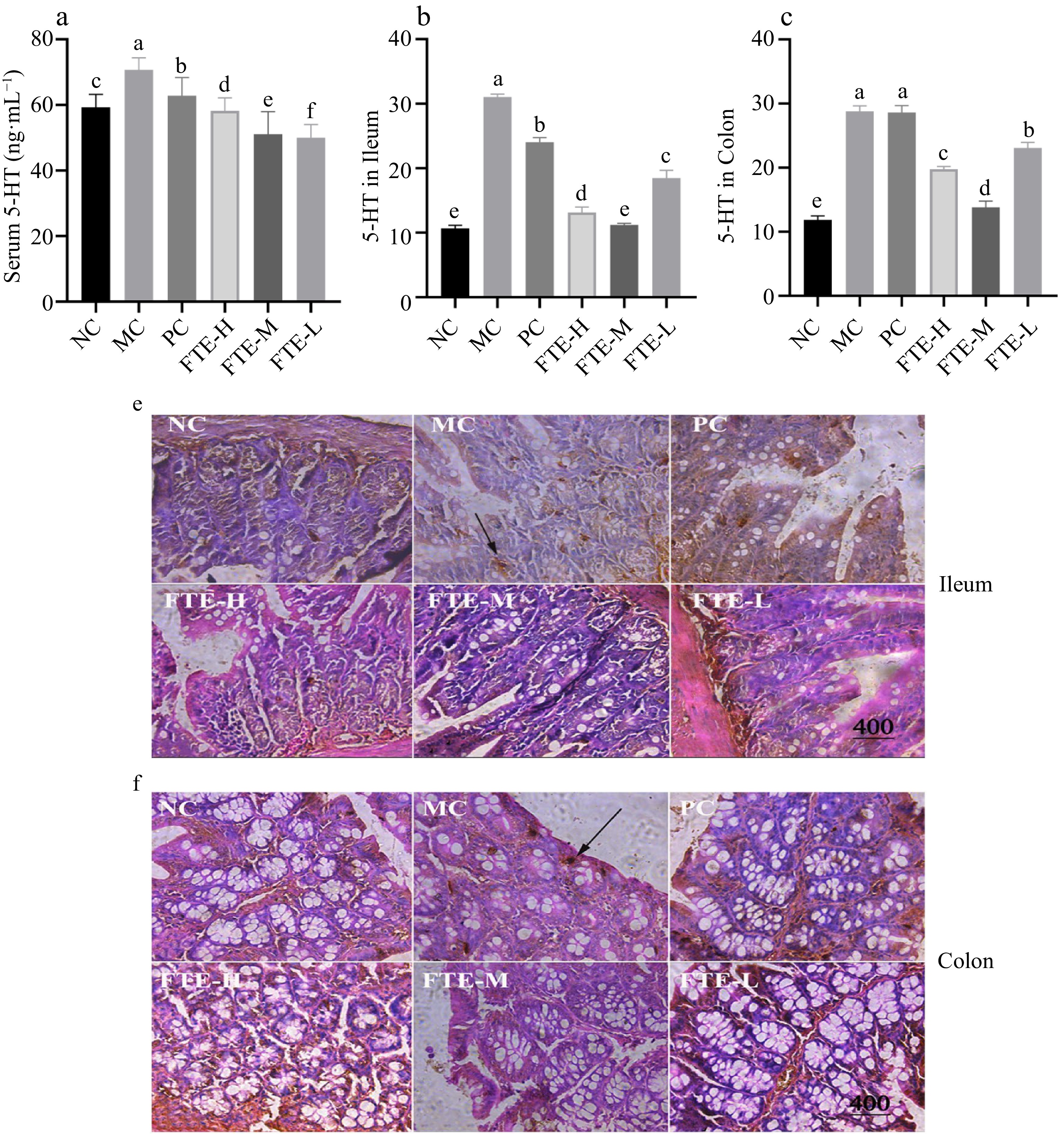
Figure 3. Analysis of regulation of the level of 5-HT in the serum (a) and microscopy, immunohistochemistry, and image analysis of 5-HT in ileum and colon (b−f). Arrows indicate 5-HT antigens (brown).
-
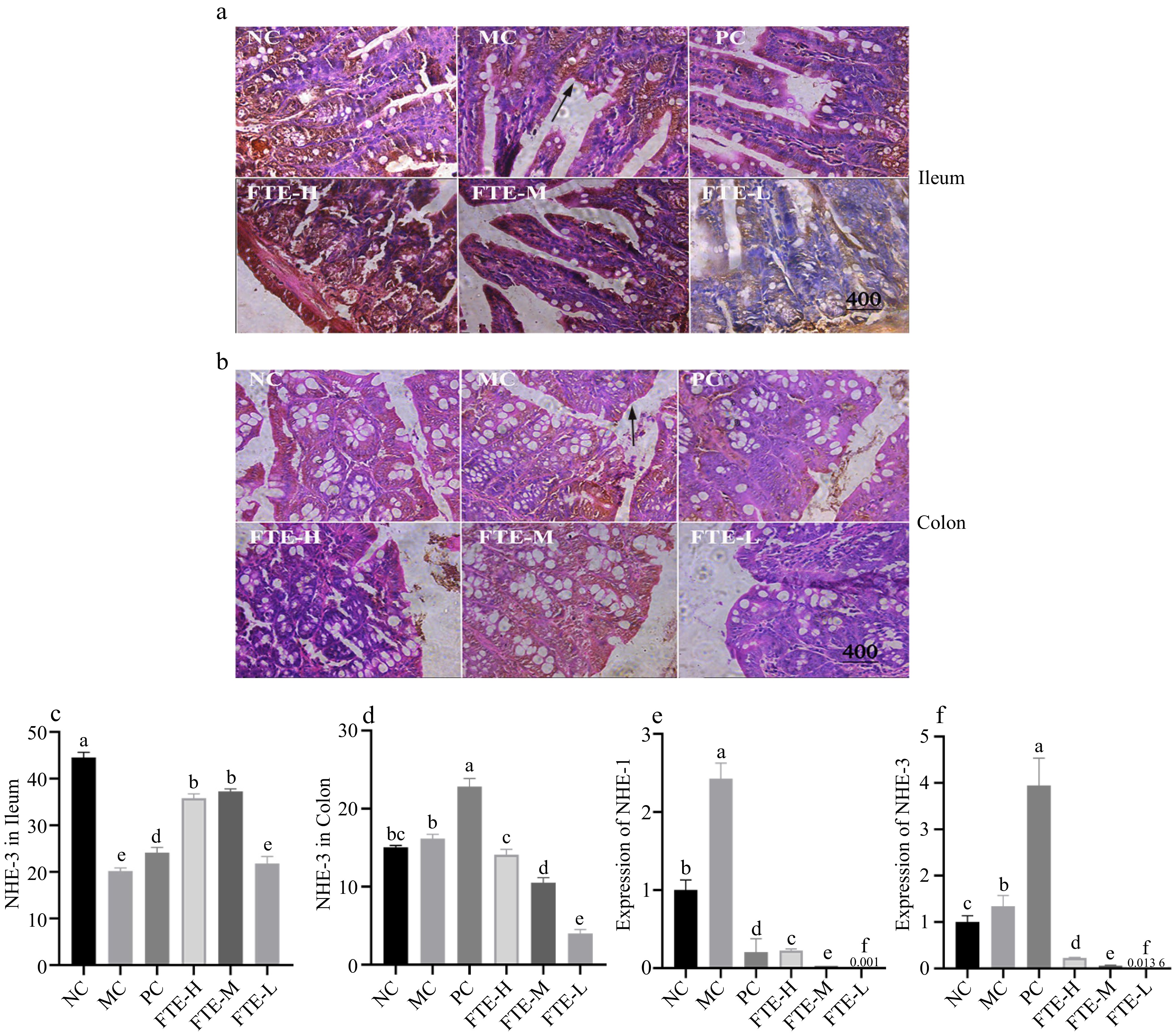
Figure 4. Microscopy, immunohistochemistry, and image analysis of NHE-3 in the ileum and colon (a−d), and analysis of regulation of gene expression of NHE-1, NHE-3 by FTE (e, f). Arrows indicate NHE-3 antigens (brown).
-
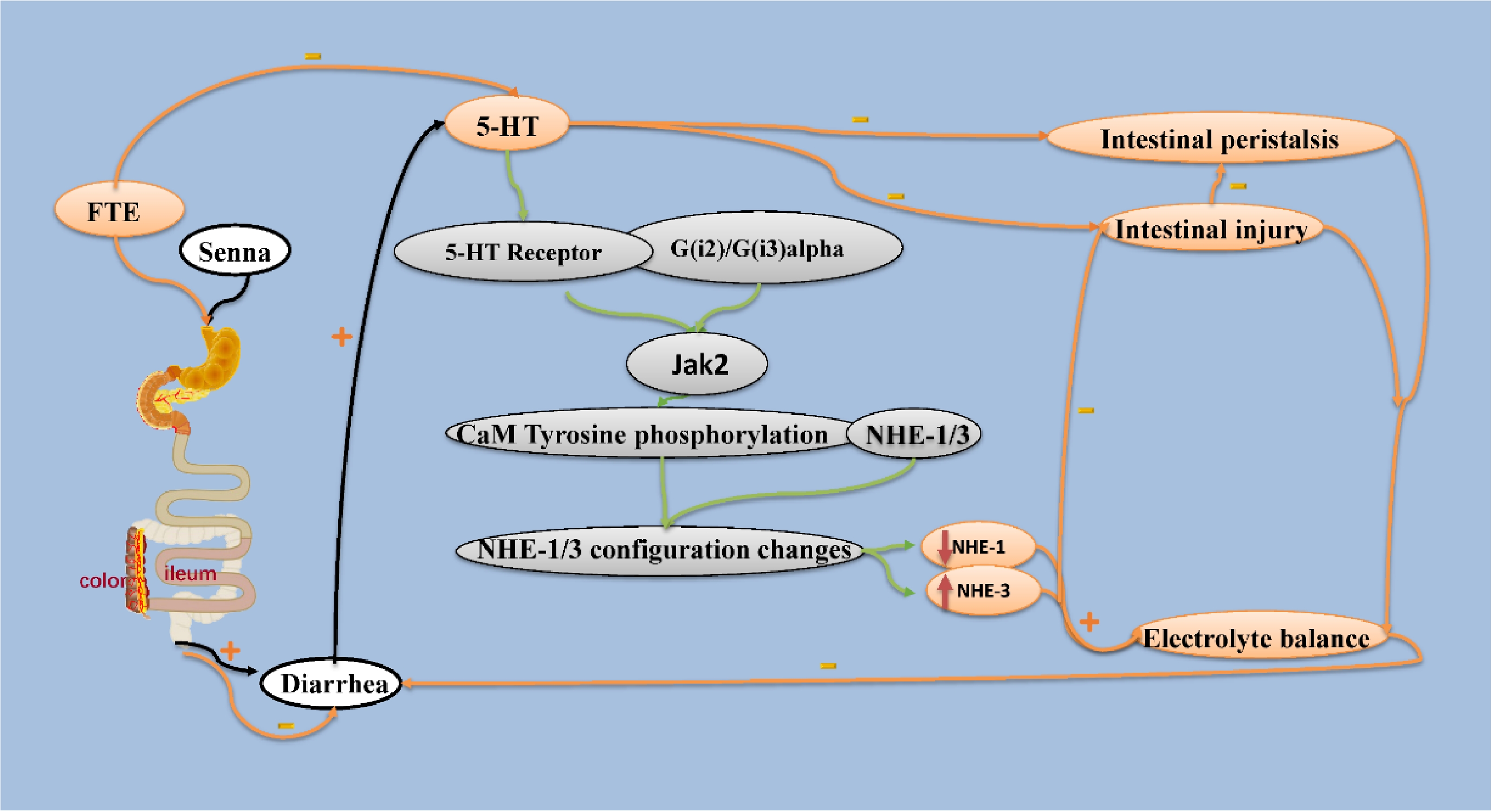
Figure 5. The potential mechanisms of the anti-diarrhea effect of FTE. First, pro-inflammation 5-HT level was significantly elevated due to senna-induced diarrhea, resulting in an increased inflammatory reaction. Moreover, chronic intestinal inflammation results in damage of the intestinal epithelium along with the dysregulation of intestinal mucosal immunity. Additionally, 5-HT binds with various 5-HT receptors which are coupled with G protein to regulate the expression of NHE-1 and NHE-3 as above. Intestinal damage and electrolyte disturbances are improved with the decreased level of 5-HT of diarrhea mice, thus alleviating diarrhea symptoms. Collectively, anti-diarrhea activity of FTE may be attributed to the maintainance of barrier integrity and electrolyte balance by anti-inflammation.
Figures
(5)
Tables
(0)